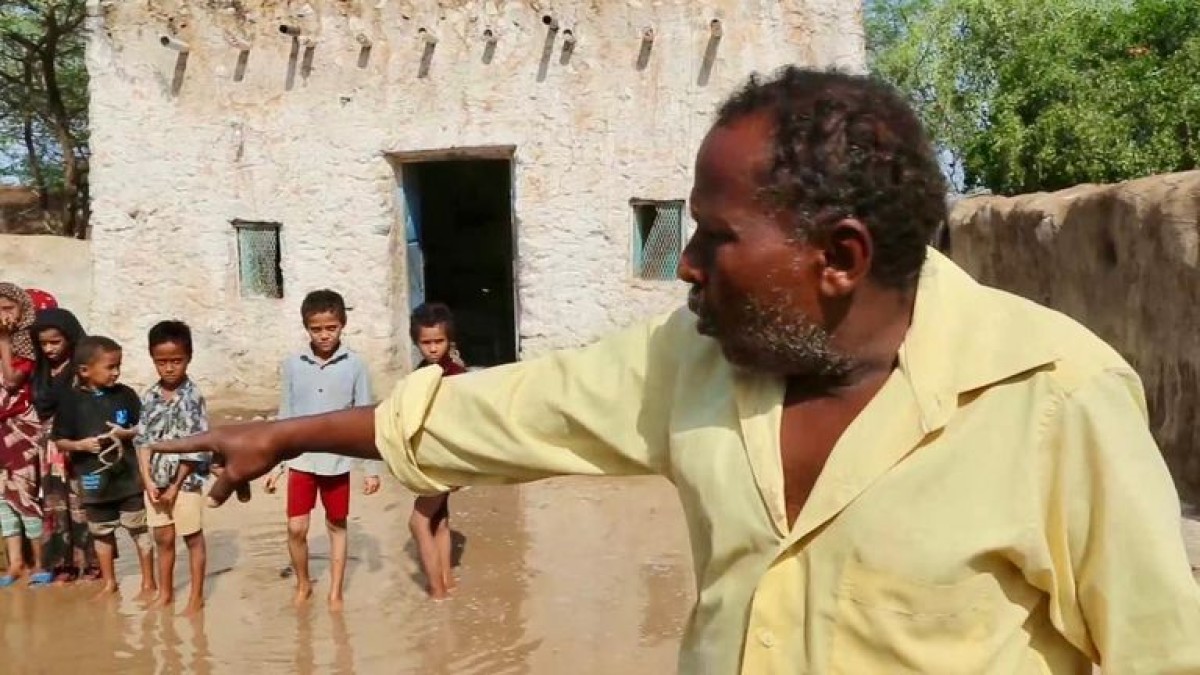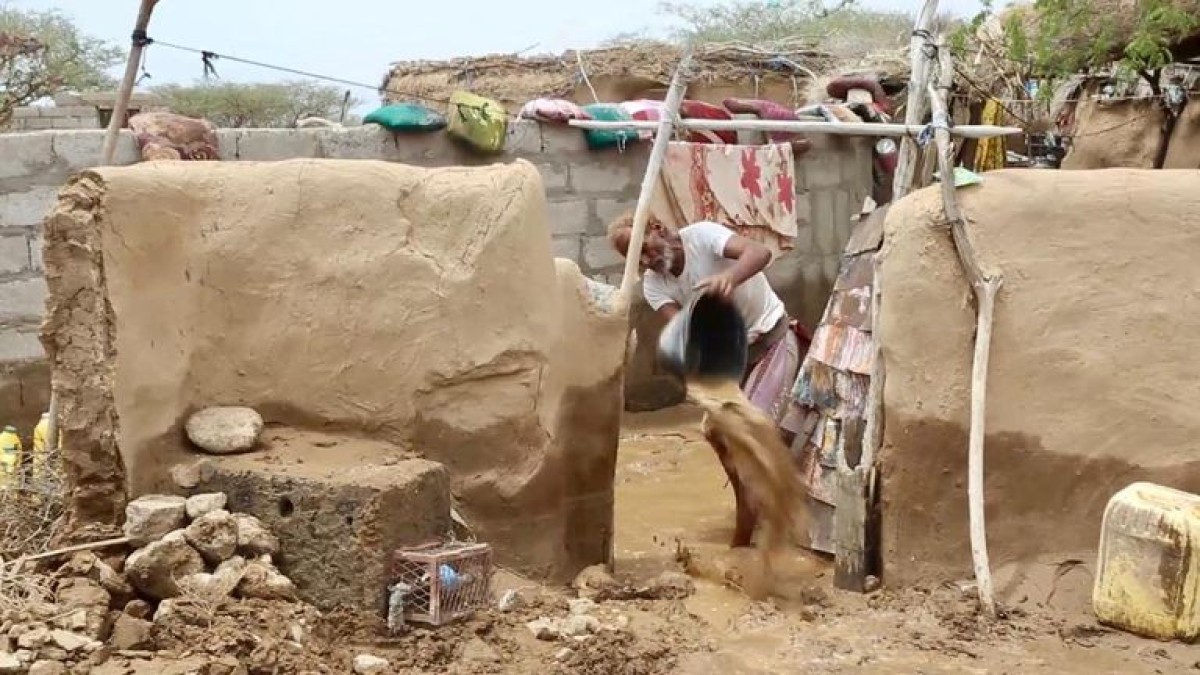We lost everything. Floods killed people and stones in Yemen


Yemeni Muhammad Suleiman escaped death, but he lost everything when floods stormed his house in a rural village south of Hodeidah Governorate, west of the country.
From his house, which was destroyed by the flood, Muhammad Suleiman points to the remaining furniture and food supplies, while his grandchildren frolic behind him in a swamp of stagnant water in front of the door of the house.
The situation of Suleiman, who says he “lost everything,” is similar to the thousands of people affected by the recent wave of floods in Yemen, which affected entire communities and left at least 232 dead and dozens injured last August.
Hodeidah was at the forefront of the affected governorates, as about 94 people were killed in the parts under Houthi control and others fell in areas controlled by the Yemeni government. The damage affected all the districts, and Zabid, Al-Zaidiya, Al-Zahra, and Hays were classified as among the areas most affected by the floods.
Families out in the open
In his speech to "Al-Ain News", the Yemeni citizen Muhammad Suleiman, one of those affected by the floods, said, "The severe floods that struck Hodeidah, no one was spared from its losses, neither homes, nor food, nor drink, nor warmth, nor shelter."
And he added, waving his hand towards the remaining dilapidated furniture, “We lost everything, even the mattress, sheets, and flour, all of which were soaked in water.”
Suleiman does not disagree with his elderly neighbor, Ali Nasser, whose mud roof was destroyed and he stood with a plastic container sweeping water from the middle of the house after removing its debris.
Nasser told Al-Ain News that “the torrent was severe, paralyzing (wiping away) our homes and household furniture, including blankets, solar panels, and wooden sleeping beds.”
He added: “Everything we owned was swept away. The flour and all the materials we had inside the house were swept away, and we were left without food.”
For his part, Abdullah Awad, who was also one of those affected, told Al-Ain News that the torrential rains left many in a miserable state, destroyed homes and roads, and threw families out into the open after losing their homes and their source of livelihood.
He added: "We were exposed to floods, and we are now in a deplorable condition. Children are sleeping in the open, women are sleeping in the open, and we have lost everything we own."
The effects of catastrophic floods in Yemen
The United Nations says that Yemen is suffering one of the worst humanitarian crises in the world and faces severe challenges as attention turns to other global emergencies.
According to the United Nations, 18.2 million people in the country, including 4.5 million displaced people, need urgent humanitarian assistance. This includes more than 60,000 refugees and asylum seekers, most of whom are from Somalia and Ethiopia.
The numbers doubled during the recent wave of floods, which left tragedies and horrific stories in Hodeidah, Malhan in Al-Mahwit, Wassab Al-Safil in Dhamar, and Shamir in Taiz, in addition to Hajjah and Ma’rib, where hundreds of thousands of families were affected, especially those displaced by the Houthi war in displacement camps.
Information indicates that more than 56 thousand homes were partially or completely destroyed, and civil infrastructure, roads and water supply networks were damaged, affecting 695 thousand families.
According to the Center for Weather Forecasting and Early Warning in Yemen, rains of varying intensity, some of which are thunderstorms and accompanied by strong winds, are expected to fall on parts of the highlands, plateaus and deserts of the governorates of Al-Mahra, Hadramaut, Shabwa and Abyan, with the possibility of them extending to the coasts.
Thunderstorms, some of them heavy, were also expected to fall on parts of the highlands and western slopes from Saada in the north to Taiz, and Al-Dhalea and Lahj in the south, extending west to the coasts, and also strong winds stirring sand and dust on the Socotra Archipelago and areas located within the range of thunderclouds.
